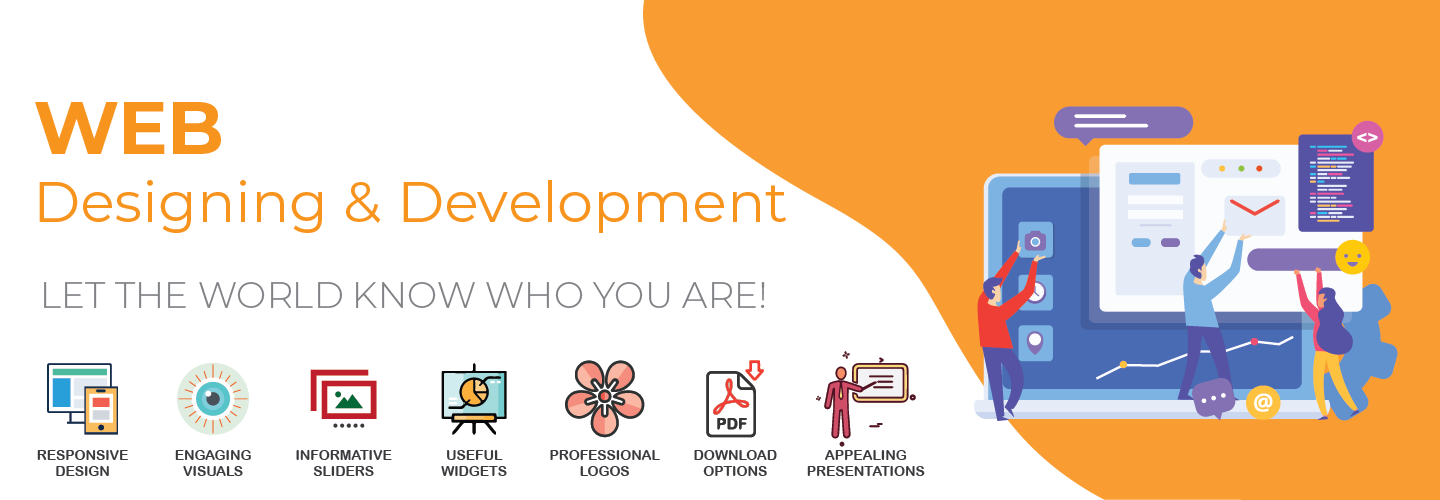
Mastering the Art of Website Development and Design: Building Your Digital Identity
Mastering the Art of Website Development and Design: Building Your Digital Identity
In the dynamic landscape of the internet, a website serves as the digital storefront for businesses, organizations, and individuals alike. Website development and design play a pivotal role in shaping the online presence and identity of entities, influencing how they are perceived by their audience and stakeholders. Understanding the intricacies of website development and design is essential for creating a compelling and effective online presence that stands out in the vast expanse of the internet.
1. Website Development: Crafting the Backbone of Your Online Presence
Website development encompasses the technical process of building and maintaining a website, involving various aspects such as coding, programming, and database management. From simple static websites to complex dynamic web applications, website development lays the foundation for the functionality and performance of a website. Key elements of website development include:
- Front-end Development: Front-end development focuses on the user-facing aspects of a website, including the layout, design, and interactivity. Front-end developers utilize languages like HTML, CSS, and JavaScript to create visually appealing and intuitive interfaces that engage users and facilitate seamless navigation.
- Back-end Development: Back-end development involves the server-side operations of a website, such as database management, server configuration, and application logic. Back-end developers work with languages like PHP, Python, Ruby, and databases like MySQL and MongoDB to ensure the smooth functioning and security of the website’s infrastructure.
- Content Management Systems (CMS): Content Management Systems like WordPress, Joomla, and Drupal simplify the website development process by providing pre-built templates, plugins, and tools for creating and managing content. CMS platforms offer flexibility and scalability, allowing businesses to easily update and expand their websites as needed.
2. Website Design: Shaping the Visual Identity of Your Brand
Website design focuses on the visual and aesthetic aspects of a website, encompassing elements such as layout, color scheme, typography, and imagery. A well-designed website not only captivates users visually but also enhances usability and user experience. Key principles of website design include:
- Responsive Design: With the proliferation of mobile devices, responsive design has become essential for ensuring that websites adapt seamlessly to various screen sizes and devices. Responsive websites provide a consistent and optimal viewing experience across desktops, laptops, tablets, and smartphones, enhancing accessibility and engagement.
- User Experience (UX) Design: User Experience design focuses on optimizing the overall experience of users as they interact with a website. UX designers conduct user research, create wireframes and prototypes, and conduct usability testing to ensure that websites are intuitive, user-friendly, and easy to navigate.
- Visual Hierarchy and Branding: Visual hierarchy refers to the arrangement and prioritization of content elements on a webpage to guide users’ attention and facilitate information consumption. Effective branding involves aligning the website’s design elements with the brand’s identity, including its logo, colors, and visual style, to reinforce brand recognition and loyalty.
3. Integrating with Social Media Platforms: Amplifying Your Online Reach
In today’s interconnected world, social media plays a crucial role in driving traffic and engagement to websites. Integrating with social media platforms like Facebook, Twitter, TikTok, YouTube, and Instagram allows businesses to extend their online reach and engage with their audience across multiple channels. Integration features include:
- Social Sharing Buttons: Social sharing buttons enable users to easily share website content on their social media profiles, increasing visibility and driving referral traffic.
- Embedded Feeds and Widgets: Embedding social media feeds or widgets on a website allows businesses to showcase their social media activity and encourage visitors to follow them on various platforms.
- Social Login and Registration: Social login and registration options streamline the user authentication process by allowing visitors to log in or register using their social media credentials, reducing friction and improving conversion rates.
In conclusion, website development and design are integral components of building a strong and effective online presence in today’s digital landscape. By understanding the principles and best practices of website development and design, businesses can create compelling websites that captivate users, drive engagement, and amplify their online reach. Whether it’s crafting the technical backbone of a website or shaping its visual identity, mastering the art of website development and design is essential for building a successful digital identity that resonates with audiences across the internet.



